Termite Mounds on the Bungle Bungle Range in Western Australia

Image credit: Ouderkraal. CC 3.0
In the picture above there appears to be a sparse forest of brown, conical trees. Closer observation reveals, however, that these are not trees at all, but mounds of dirt. These mounds were formed not by erosion, or wind. They were formed by insects, insects that, as a group display a remarkable collective intelligence. These insects, mound-building termites, have created structures from which human engineers and architects are learning lessons. Rather than being pests to be eliminated, these insect builders are an asset to their environment.
Termite Mound in Niger
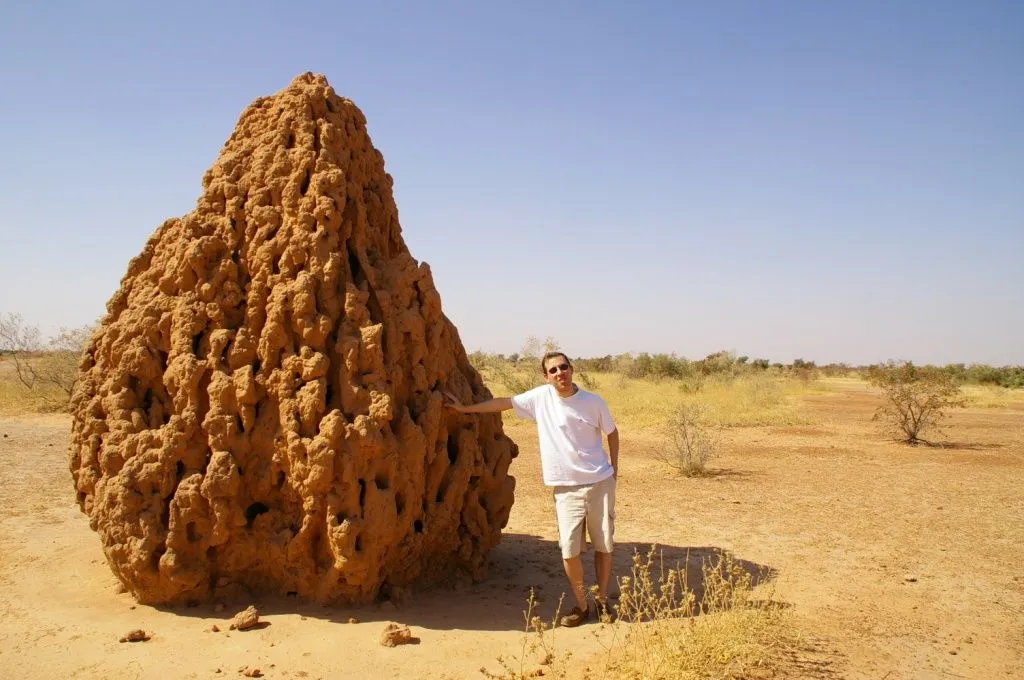
Credit: Mathieu Dessus. Used under CC 2.0 license
A near cousin to the mound-building termite is the subterranean termite. Instead of building mounds above ground, these termite construct large underground colonies. They tunnel from these colonies to wood, wherever they find it. In my community, subterranean termites are significant pests. It's hard to find a home here where termite proofing does not exist. If the insects are undetected they can undermine the structural integrity of a home.
In the picture below are visible hundreds of dead Formosa termites. This is a common invasive species in the U.S. The termites in the picture were swarmers, reproductive termites. They take flight during mating season and try to find a mate. If male and female meet successfully, they will form a nest and start a new colony. The home featured here apparently has a serious termite problem.
Home in Florida, USA, With Dead Termites
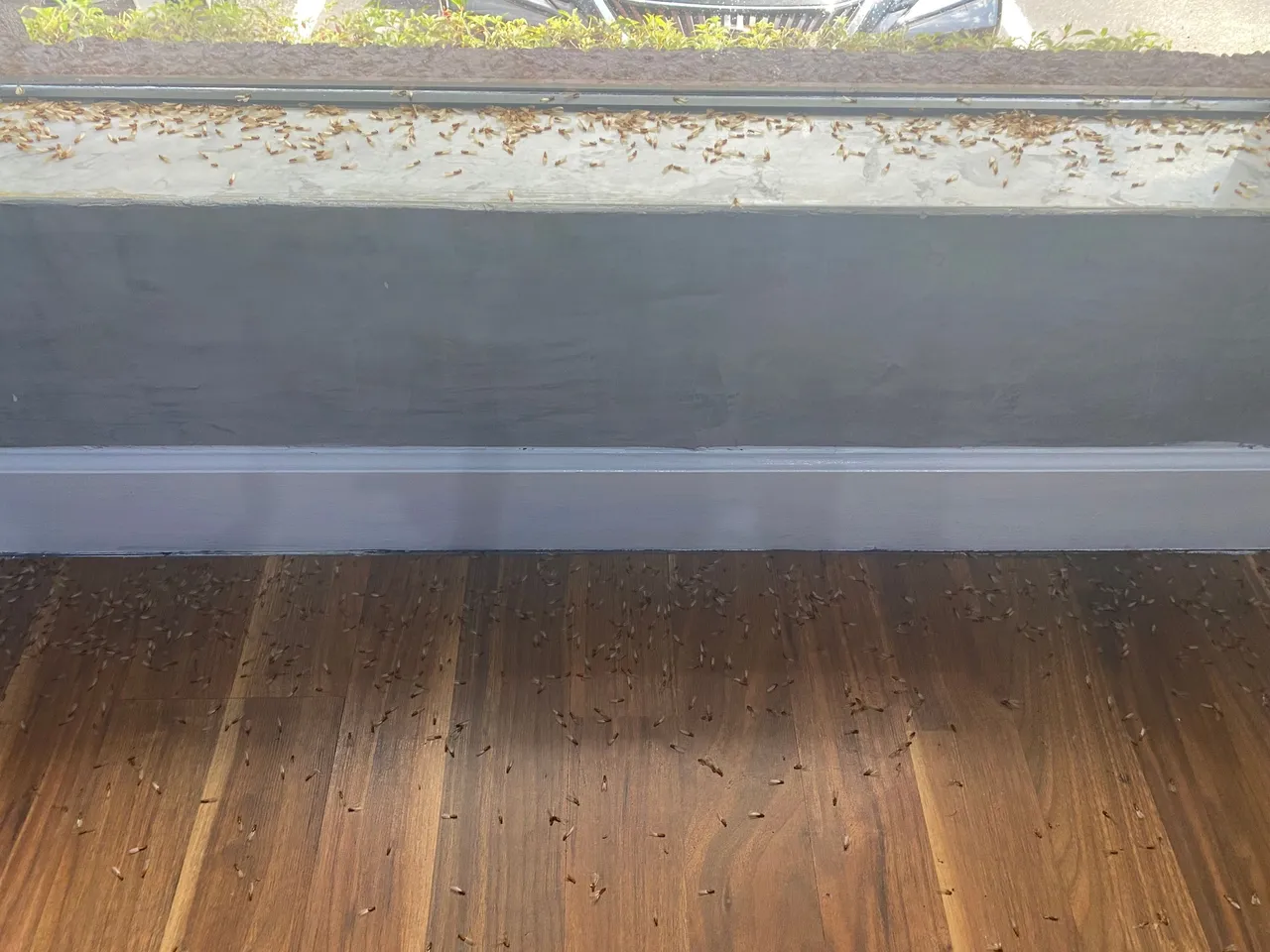
Teechippy. Used under CC Attribution, share-alike license.
The mound-building termite and its subterranean cousin have a common origin: the cockroach. Some 170 million years ago these cousin termites evolved along parallel, but separate paths.
The distinct living styles of subterranean and mound-building termites evolved, scientists believe, in response to biotic (living) and abiotic (non-living) influences.
Mound-Building Termite Soldier
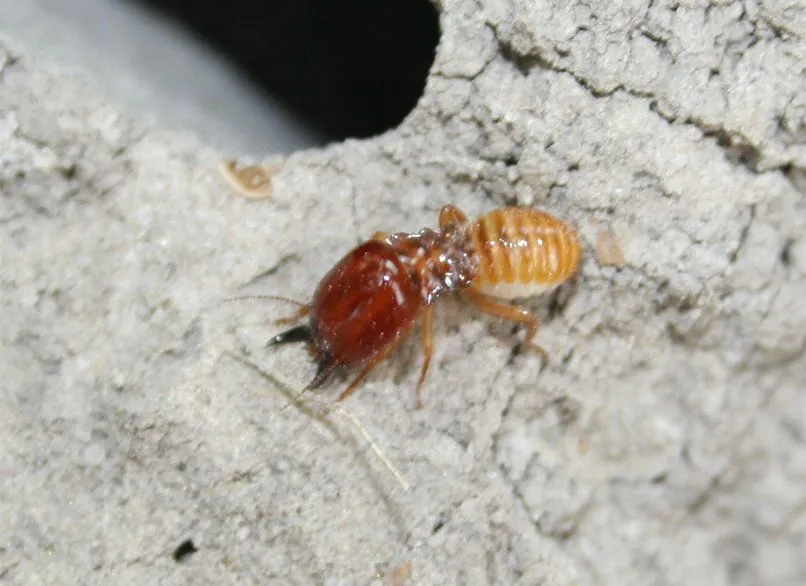
Attribution: Discott. Used under CC 3.0 share-alike license
Termites are eusocial--like bees and ants, but they are not closely related to these insects. They are classified in a different order. Bees and ants are in the Order Heminoptera. Termites are in the Order Isoptera. However, the unschooled eye (mine, for example) might mistake a termite for an ant. Termites are actually sometimes called white ants because of this misidentification. It's especially hard to tell them apart when they are in the winged (reproductive) stage.
Here is a brief YouTube video that shows the distinction between the two insects:
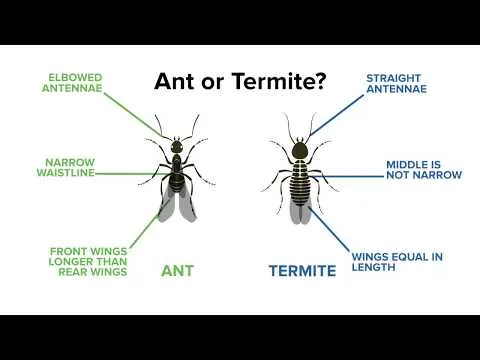
As the video shows, they have very distinct body types.
Although the termite has traditionally been classified in its own order, Isoptera, recent genetic analysis challenges that classification. It seems the termite did not leave its cockroach ancestry behind. DNA analysis shows such close similarity between the cockroach and the termite, that there has been a movement to include the Order Isoptera in with the Order Blattodea--the cockroach order. Blatodea encompasses over 4000 species of cockroach and 3000 termite species.
Some have described the termite as a social cockroach. Those of us who have battled cockroaches in the past can now better understand the subterranean termite's tenacity when it is attempting to eat the wood in our homes :))
Eusocial
The key to the success of both ant and termite colonies is their social nature. Both are eusocial--they live within highly organized communities where the survival of the group is dependent on each member doing its job cooperatively. Sometimes it is said that humans are eusocial, but 'loosely' eusocial.
In the picture below I believe we can see worker termites. I'm making a guess as to their cast based on other pictures and descriptions I found on the web. The cast is not identified in this picture. The workers are generally pale in color and smaller than soldiers. They are blind. They are the most numerous in a colony and are designed to chew. They digest food and feed others in the colony through trophallaxis.
Worker Termites
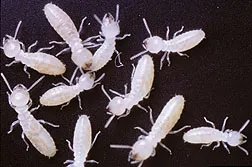
Alfredo Flores, USDA Forest Service. Public
In eusocial species, such as the termite, the members of a community work so closely together that as a whole they create what might be called a 'super organism'. This complex structure, which in mound-building termites is manifested in the mound, is comprised of colony members working in seamless cooperation.
There is a strict cast system and each worker's role is defined for life. The function of the caste members is reflected in their morphology. In the picture of a soldier termite (earlier in this blog), for example, we can see the large head and mandibles, used for defense of the colony.
The largest members of the termite colony are the king and queen.
Termite King and Queen (With Soldier, Perhaps?)

Archiri Bitamsimli. Ghana. Used under CC Attribution share alike license.
Unlike in eusocial bee and ant colonies, the king termite remains by the queen's side as she performs her only task, which is to lay eggs and provide new members of the colony. The king is larger than other termites in the colony, though not as large as the queen. He plays a vital role in the colony. Not only does he daily inseminate the queen, but he also releases vital pheromones.
I found a video that shows the interaction between the royal couple and the rest of the colony.
https://news.cnrs.fr/videos/inside-a-termites-nest
The queen also releases pheromones which it is believed influence the development of eggs. Pheromones are critical to the colony. It is the release of pheromones that determines the cast of each termite as it develops from an egg. Workers and soldiers are created sterile and the social balance of the colony is maintained.
A queen can be huge...up to six inches long. In this Youtube video you get to actually see a queen in action. She is so huge that she is immobile. It has been suggested that the queen does not so much rule the colony as she is ruled by her ovary.
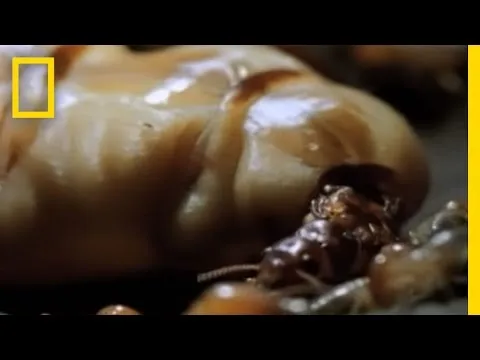
The queen is eventually immobile, and helpless until she dies. Meanwhile she can produce 30,000 eggs a day, for her lifespan of 15 years. It is the job of the workers and soldiers to see that she is fed, tended and protected. When the queen dies, it often signals the death of the colony, although the queen may be replaced in some cases.
The Mound Builders: Macrotermitinae
The essential difference between mound-building termites and subterranean termites is diet. The subterranean termite feeds exclusively on wood, cellulose. That's why this termite presents a danger to wooden structures and even to trees. The subterranean is considered a pest because of its voracious appetite for wood.
However, the mound-building termite has a more varied diet. The secret to being able to consume this diet is in its gut. While the subterranean termite has enzymes in its gut that break down cellulose, the mound builders do not. They have an almost complete complement of enzymes but are lacking one for cellulose digestion. So, over time they evolved a way to obtain this enzyme. They became farmers.
Many mound-building termites grow a fungus, Termitomyces, that produces the enzyme they need. This fungus becomes part of their diet and therefore offers the one necessary enzyme for digesting cellulose.
I found a diagram of a typical mound-building termite farm, with fungus, termites, queen and eggs indicated. My thanks to Professor Meike Piepenbring from Goethe University in Frankfurt, Germany for this quite informative diagram.
Diagram of Termite Farm in a Mound-Building Termite Colony
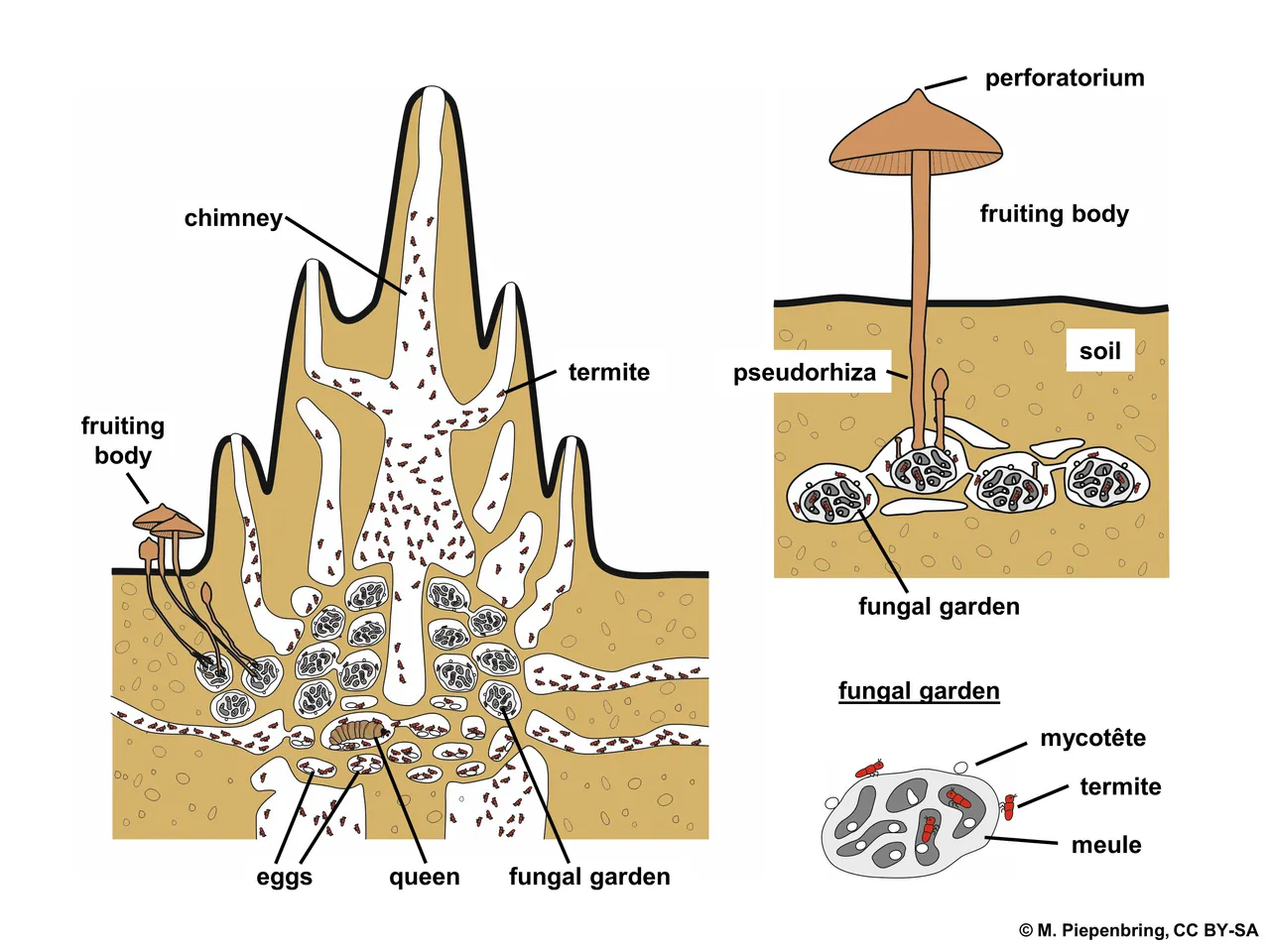
Prof. Meike Piepenbring. Used under CC 3.0 share alike license.
The fungus is referred to as an 'obligatory fungal symbiont', because the fungus and the termite have a symbiotic relationship that is essential to the survival of both.
Termites collect debris from the surrounding area, provide nutrition for the fungus, and then nurture the fungus with the nutrients. In order to perform this nurturing task, the termites have developed two worker casts of workers. There are the foragers, called major workers. These go out into the environment and collect the debris, dung, whatever nutritional elements go into the fungus diet. The second cast of workers, minor workers, do the actual farming. Their farming process is quite complex and is described briefly in a passage from the journal Microbiology Reviews.
(The minor workers) construct complex combs from their faeces within chambers either within or adjacent to the hive. In addition to providing a physical structure, termite faeces also contain a mixture of fungal asexual spores that inoculate the combs and partially digested plant materials that promote Termitomyces growth.
Diversity Among Mound-building Termites
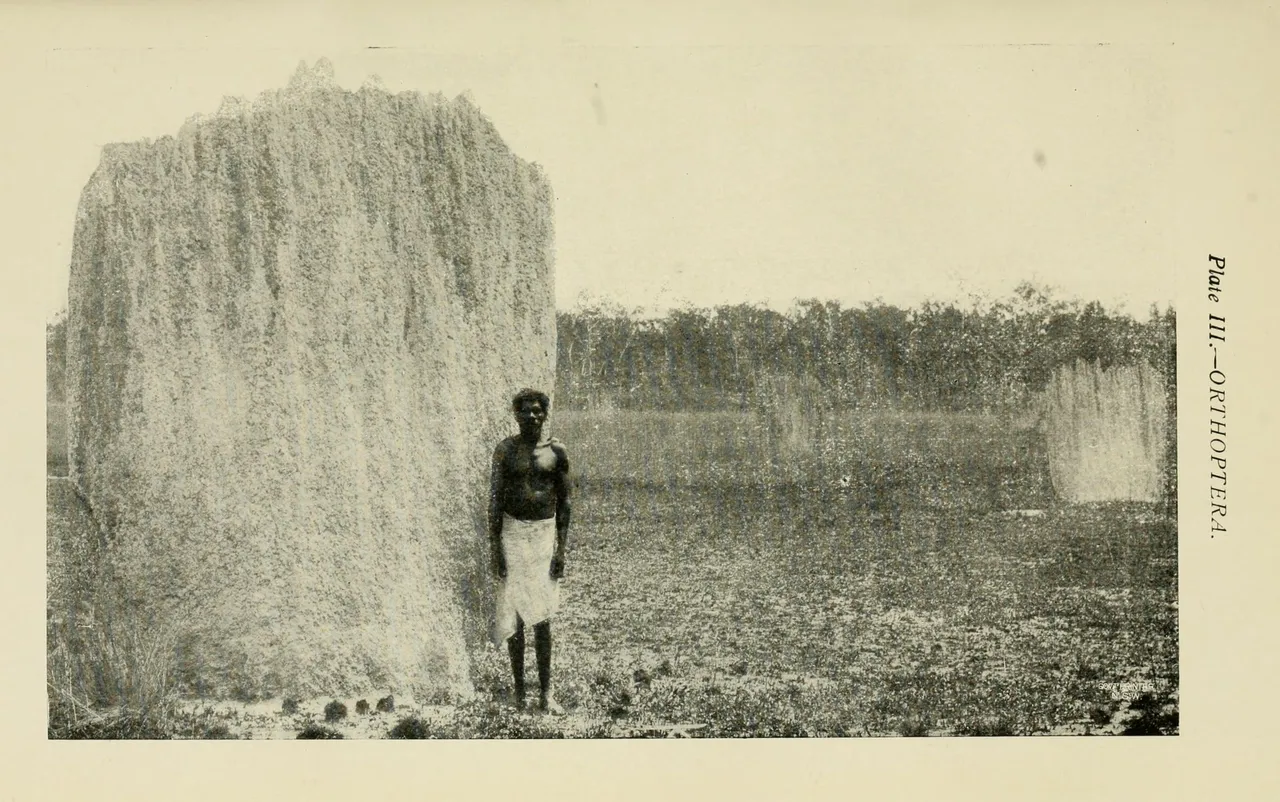
Mound of Ameritermes meridionalis Credit: W.W. Frogatt. 1907. Public.
In this blog I have been referring to mound-builders as though they are a homogenous group. They are not. There is wide diversity among the mound-builders. It seems that not all grow fungus. Amitermes meridionalis, for example (mound pictured above), a species of mound-builder native to the Northern Territory of Australia, eats grass.
Benefit to Environment
Mound-building termites are regarded as a keystone species in many parts of the world. In South America, for example, Cornitermes cumulans is a keystone species in the grasslands of Brazil.
Cornitermes Cumulans Alate
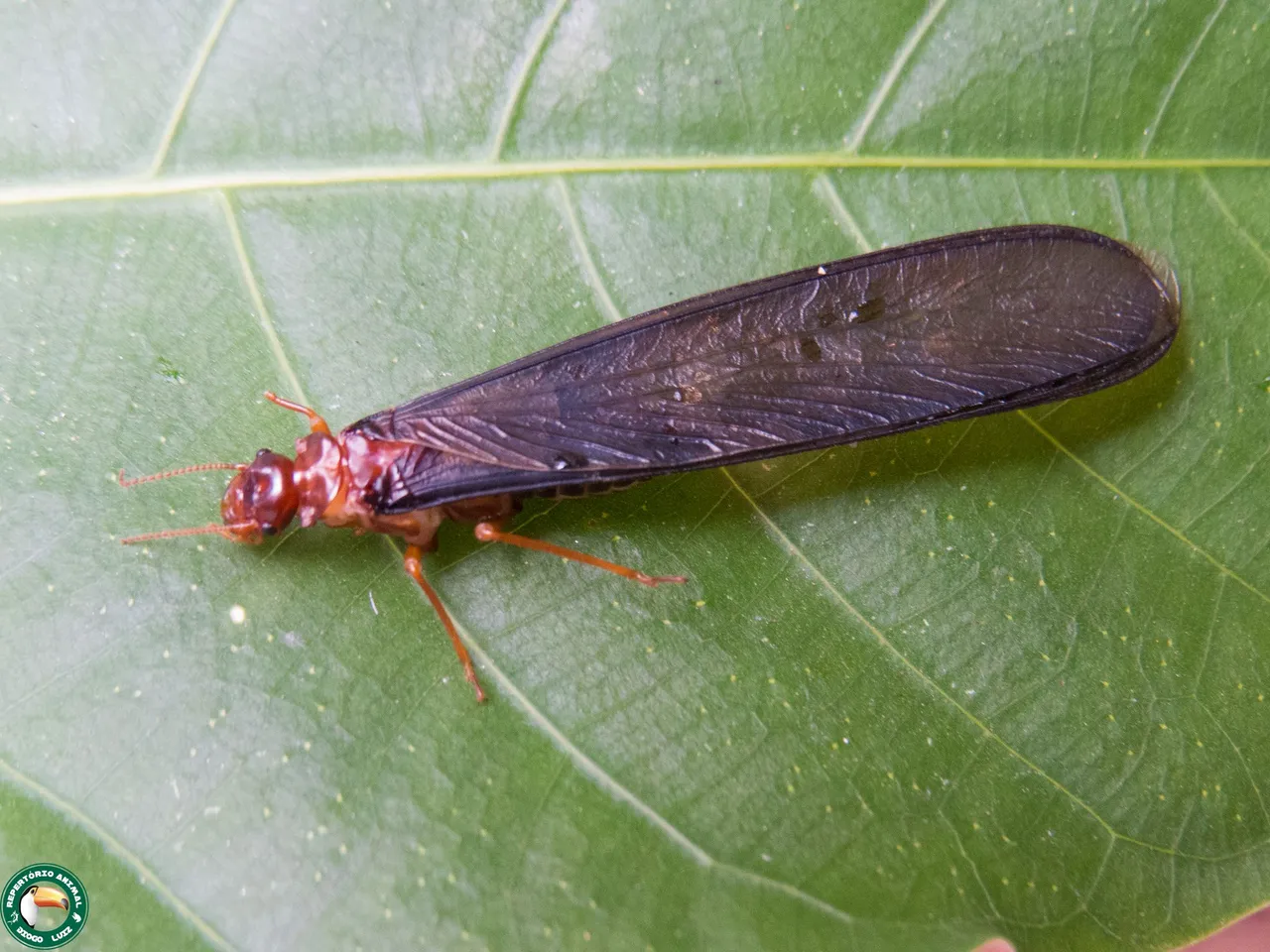
Credit: Diogo Luiz. Used under CC attribution share alike 4.0 license.
Mound-building termites enrich the soil in which they build their mounds. Just to touch on a few of the ways mound-builders are important to an ecosystem:
- They clean debris that would otherwise accumulate in the environment
- They cycle nutrients from this debris and return it to the soil
- They turn the soil
- They are a food source for a wide variety of animals, including humans
- Their abandoned nests provide habitats for other animals
Here is an HHMI Biointeractive video that illustrates how the mound-building termite enriches the ecosystem.
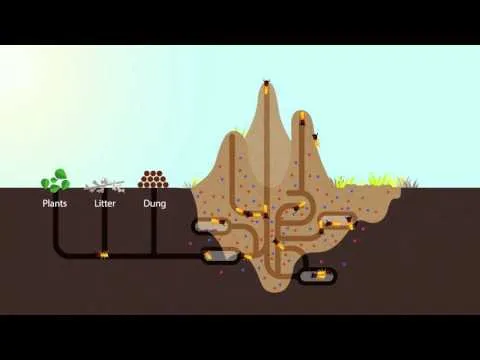
This is what happens in mound-building termite society.
Conclusion
There are so many aspects to the topic of mound-building termites that I have to leave a lot of important material unaddressed. One of the most interesting, and important, aspects of this termite's lifestyle is the engineering that goes into building their mounds. The relevance to human architecture and engineering is significant. We are learning from these insects.
An intriguing aspect of mound-building termite architecture is the ventilation system they design to control temperature and humidity in the inner chamber. They construct chimneys and air vents that turn the mound into a kind of lung that takes in air and expels it. The goal is to keep the temperature and humidity of the inner chamber constant. Not only the royal chamber, where the precious queen resides, but food and other chambers must also be temperature controlled.
Here is a video that offers an explanation for how the mound works. However, there are still mysteries about how the termites manage this amazing architectural feat.
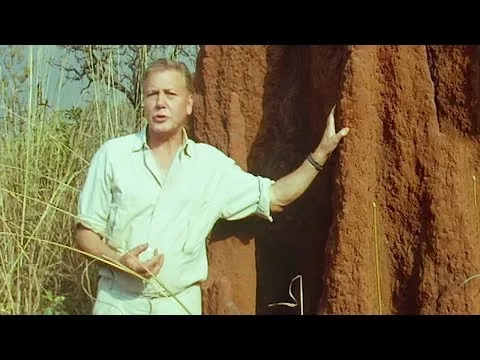
Today's architects and engineers are learning about smart design from the mound-building termite. Here is another video that explains how one building (there are others) in Zimbabwe was built with the termite ventilation system in mind.
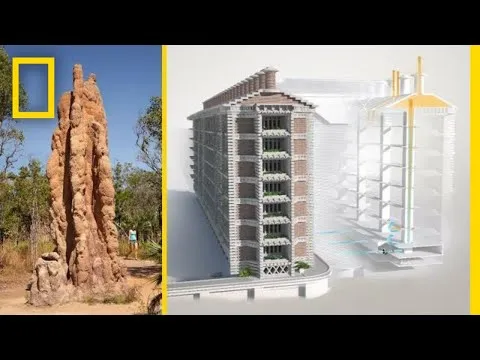
Thank you for reading my blog. I found this subject irresistible. The more I wrote, the more I discovered. It is a subject that will certainly be revisited.
Peace and health to all.
Some resources used in writing this blog
https://www.cbc.ca/radio/thecurrent/the-current-for-november-23-2018-1.4917641/just-unbelievable-termite-mound-network-the-size-of-great-britain-discovered-in-brazil-1.4917643
https://esajournals.onlinelibrary.wiley.com/doi/full/10.1002/ecs2.2148
https://www.asme.org/topics-resources/content/what-termites-can-teach-engineers
https://media.hhmi.org/biointeractive/click/keystone/termite.html
https://asknature.org/innovation/passively-cooled-building-inspired-by-termite-mounds/
https://www.newcivilengineer.com/latest/termites-crowned-top-engineers-of-natural-world-01-04-2016/
https://phys.org/news/2024-02-cathedral-termite-mounds-lunar.html
https://www.imeche.org/news/news-article/feature-nature%27s-engineers-inspire-sustainable-building-designs
https://www.researchgate.net/publication/201996995_The_mound-building_termite_Macrotermes_michaelseni_as_an_ecosystem_engineer
https://www.princeton.edu/news/2015/02/05/tiny-termites-can-hold-back-deserts-creating-oases-plant-life
https://news.miami.edu/stories/2022/09/termites-may-have-a-larger-role-in-future-ecosystems.html
https://www.biointeractive.org/sites/default/files/termites-2015-poster.pdf
https://www.jjext.com/12649-2
https://www.nsf.gov/news/news_summ.jsp?cntn_id=134006&org=NSF
https://science.thewire.in/environment/why-termite-mounds-are-wonders-of-architecture-and-natural-engineering/
https://www.lviassociates.com/blog/2023/09/architects-look-to-termite-mounds-to-improve-building-ventilation
https://www.bbcearth.com/news/what-termites-can-teach-architects&ocid=twert
https://india.mongabay.com/2020/10/architectural-secrets-of-termite-mounds/
https://academic.oup.com/biolinnean/article/126/2/304/5251914
https://www.canr.msu.edu/resources/biotic-abiotic#:~:text=Description,is%20critical%20in%20an%20ecosystem
https://australian.museum/learn/animals/insects/what-are-the-differences-between-ants-and-termites/)
https://www.nwf.org/Educational-Resources/Wildlife-Guide/Invertebrates/Termites
https://entomology.k-state.edu/outreach-and-services/diagnostician/lab-news/winged-ants-vs-termites.html
https://arthropod-systematics.arphahub.com/article/75819/
https://en.wikipedia.org/wiki/Blattodea
https://www.ncbi.nlm.nih.gov/pmc/articles/PMC3279739/
https://encyclopediaofarkansas.net/entries/termites-14997
https://www.sciencedirect.com/topics/agricultural-and-biological-sciences/trophallaxis
https://www.ncbi.nlm.nih.gov/pmc/articles/PMC3279739/
https://www.britannica.com/animal/termite/Nests
https://www.lsuagcenter.com/profiles/lbenedict/articles/page1558637166771
https://pestaid.com.au/things-to-know-about-the-king-termite/
https://www.ncbi.nlm.nih.gov/pmc/articles/PMC3169079/
https://www.q-files.com/life/insects/termites
https://www.npr.org/2011/05/06/136028437/a-termite-queen-and-her-ultimate-sacrifice
https://www.realclearscience.com/blog/2021/10/30/six_ridiculous_facts_about_termite_queens_800088.html
https://royalsocietypublishing.org/doi/10.1098/rsos.230126
https://www.ncbi.nlm.nih.gov/pmc/articles/PMC9779920/
https://en.wikipedia.org/wiki/Amitermes_meridionalis
https://media.hhmi.org/biointeractive/click/keystone/termite.html
https://www.mightymitetermite.com/blog/do-termites-have-predators/
https://www.harvardmagazine.com/2015/10/harvard-study-finds-that-termite-mound-functions-as-lung-that-sneezes-carbon-dioxide
https://termitemoundthermogation.weebly.com/mound-thermoregulation.html
